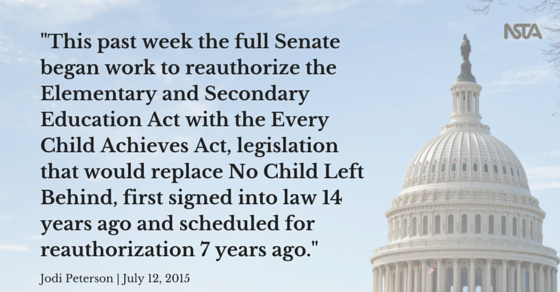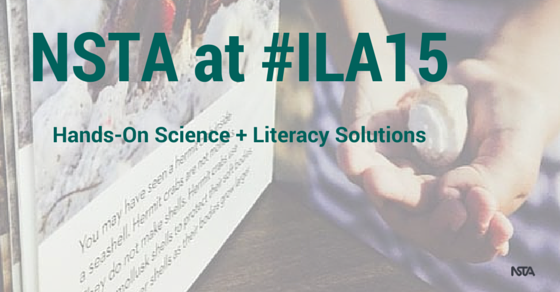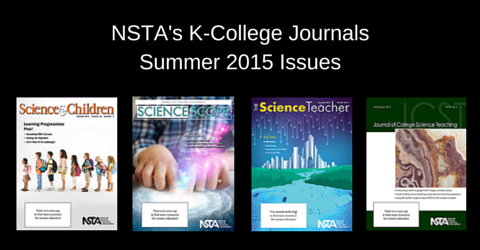K–5 and the Next Generation Science Standards—Webinars
By Peggy Ashbrook
Posted on 2015-07-14
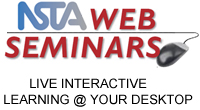 The free webinars by National Science Teachers Association experts, Carla Zembal-Saul, Mary Starr, and Kathy Renfrew, will guide us to a deeper understanding of the Next Generation Science Standards (NGSS). Read more about them and register to attend here.
The free webinars by National Science Teachers Association experts, Carla Zembal-Saul, Mary Starr, and Kathy Renfrew, will guide us to a deeper understanding of the Next Generation Science Standards (NGSS). Read more about them and register to attend here.
July 22
Teaching NGSS in K–5: Constructing Explanations from Evidence
July 29
Teaching NGSS in K–5: Teaching NGSS in K–5: Making Meaning through Discourse
August 5
Teaching NGSS in K–5: Planning a Coherent Storyline
Taking a close look at these standards promises to be a benefit even if your state has not yet adopted the NGSS.
Summer weather events and patterns
By Peggy Ashbrook
Posted on 2015-07-13
 If you haven’t been tracking weather events with the children in your summer and year-round programs, they are missing an opportunity to make observations and learn about collecting data. Some regions have more of the same every day, some experience severe weather. Variations in temperature, cloud cover, wind and precipitation can be observed between morning arrival and afternoon outdoor play or dismissal.
If you haven’t been tracking weather events with the children in your summer and year-round programs, they are missing an opportunity to make observations and learn about collecting data. Some regions have more of the same every day, some experience severe weather. Variations in temperature, cloud cover, wind and precipitation can be observed between morning arrival and afternoon outdoor play or dismissal.
What kind of media do your children use to document their observations? Fingerpainting with shaving cream to sculpt clouds? Circling the symbol that represents the current weather? Taking photos to view and discuss  later? Measuring and charting temperature or rainfall? How can children document hail? After the lightning and thunder are completely over, run outside and gather a few of any hailstones that haven’t melted and quickly measure them?
later? Measuring and charting temperature or rainfall? How can children document hail? After the lightning and thunder are completely over, run outside and gather a few of any hailstones that haven’t melted and quickly measure them?
 And where does all that water go? What do we use water for? Four-year-olds in one preschool talked about how water was present in their lives and drew small pictures and wrote a few words about this.
And where does all that water go? What do we use water for? Four-year-olds in one preschool talked about how water was present in their lives and drew small pictures and wrote a few words about this.
Some kindergarten classes keep track of air temperature within ten degree (*F) blocks over a year. Especially in summer, the change in air temperature can be measured over the hours in the school day, or  simply noted as “cool,” “warm,” or “hot.” This prepares children to consider how sunlight warms the Earth’s surface, a Disciplinary Core Idea in the Next Generation Science Standards and part of Kindergarten Performance Expectation, K-PS3-1, Make observations to determine the effect of sunlight on Earth’s surface. One class compared the speed of ice cube melting, in the shade or in the sun.
simply noted as “cool,” “warm,” or “hot.” This prepares children to consider how sunlight warms the Earth’s surface, a Disciplinary Core Idea in the Next Generation Science Standards and part of Kindergarten Performance Expectation, K-PS3-1, Make observations to determine the effect of sunlight on Earth’s surface. One class compared the speed of ice cube melting, in the shade or in the sun.
When addressing severe weather events or patterns, we try to inform children without scaring them. Even older children can be scared by difficulties such as drought. California nanny and parent, Stef Tousignant, wrote about “How to Talk to Your Kids About the California Drought.”
Jaqueline Stansbury wrote about her memories of the two-year drought in 1976-1977. She says, “What I remember from my childhood in the 70s is that we were all in it together”, and offers tips for using less water.
The Reading Chair column in the March 2009 issue of Young Children reviewed Lila and the Secret of Rain by David Conway, illustrated by Jude Daly (Frances Lincoln 2007), the story of a girl in Kenya. I wonder if children who are experiencing an extended drought might become anxious when hearing Lila’s mother’s statement: “Without rain there can be no life.” Will they think it is their responsibility to end the drought as Lila did? Will they feel empowered by the actions they can take, such as turning off the tap while brushing their teeth or helping to plant drought tolerant plants in a garden?
My area has experienced rain almost every day for a month so I don’t have answers to these questions. Please share your practices in teaching about drought and in water-conserving methods.
Senate Debates NCLB; House Passes NCLB Rewrite Legislation, Student Success Act
By Jodi Peterson
Posted on 2015-07-12
This past week the full Senate began work to reauthorize the Elementary and Secondary Education Act with the Every Child Achieves Act, legislation that would replace No Child Left Behind, first signed into law 14 years ago and scheduled for reauthorization 7 years ago.
Also last week, the House of Representatives narrowly voted (218 to 213) to approve the Student Success Act, their version of legislation to replace No Child Left Behind. This conservative bill would significantly reduce the federal government’s role in K-12 education. Twenty seven Republicans joined all House Democrats in voting against the bill.
ESEA in the House: Student Success Act (H.R. 5)
The Student Success Act dramatically reduces the federal role in education by returning authority for measuring student performance and turning around low-performing schools to states and local officials.
It requires states to establish academic standards in reading, math, and science and maintains current law requirements that states develop and implement a set of assessments for all students in reading and math in each of grades three through eight and once in high school, and in science once in each of the grade spans for grades three through five, six through nine, and 10 through 12.
It eliminates federal “Adequate Yearly Progress” (AYP) and allows states to develop their own accountability systems and allows states to develop turnaround strategies for low performing schools.
The Student Success Act also allows states to develop and implement teacher evaluation systems without conditions from the federal government.
It contains a Title I Portability provision, giving states the option of allowing Title I money to follow low-income students to a public or charter school of the parent’s choice.
The bill also severely limits the authority of the Secretary of Education over decisions in the classroom by prohibiting the Secretary from imposing conditions on states and school districts, including the adoption of the Common Core State Standards, in exchange for a waiver of federal elementary and secondary education law or federal grant funds. The bill prevents the Secretary from creating additional burdens on states and districts through the regulatory process, particularly in the areas of standards, assessments, and state accountability plans and prohibits the Secretary from demanding changes to state standards and influencing and coercing states to enter into partnerships with other states.
During floor debate an amendment to allow states to use federal funds without federal restrictions was rejected. However, an amendment that would allow parents to opt their children out of testing required under the bill was adopted with the support of a few Democrats.
This bill has been roundly opposed by House Democrats, teachers’ unions and civil rights groups, who say it doesn’t invest enough in high poverty districts and will not hold schools accountable for the student achievement of minority students and students with disabilities. The Administration has said it would veto this bill.
Read a summary of House bill Student Success Act here.
ESEA in the Senate: Every Child Achieves Act (S. 1177)
The full Senate is expected to continue debate on their NCLB rewrite the week of July 13. The debate surrounding this legislation is quite different than what occurred in the House, since this bill was crafted with bipartisan support in a process lead by the two education champions, Senators Alexander and Murray. The bill also received a unanimous vote in the Health, Education, Labor, and Pensions (HELP) committee.
Key outstanding issues with the bill include accountability, equity/resources, and Title I portability (vouchers).
With an open amendment process, there have been a number of amendments offered to the bill. An amendment that would allow Title I dollars to follow students was defeated, but more voucher amendments by Republicans are expected.
Also expected this week is an amendment/debate on a five-year, federal-state partnership to expand and improve early-learning opportunities for children from birth to age 5.
The Senate Every Child Achieves Act maintains the current NCLB testing requirements, but allows the states to decide their accountability structure. It also maintains the requirement that states report disaggregated data to highlight achievements of subgroups of students. Many groups have been vocal about strengthening accountability requirements, and the Administration would like to see language included that would require states have a plan in place to address the lowest-performing 5-percent of schools in each state.
It also restricts the power of the Secretary of Education with language that says the federal government may not mandate or provide incentives for states to adopt any particular set of standards, including the Common Core State Standards.
Section 2005 of the Every Child Achieves Act, which was added in a bipartisan Franken-Kirk Amendment during HELP Committee consideration, establishes a program to provide each state with formula-based funding that would be used to support partnerships between local schools, businesses, universities, and non-profit organizations to improve student learning in the science, technology, engineering, and mathematics (STEM) subjects. Each state would choose how to spend and prioritize these funds, which can support a wide range of STEM activities from in-depth teacher training, to engineering design competitions, to improving the diversity of the STEM workforce. NSTA and the STEM Education Coalition have been very vocal in their support of a strong STEM education component in this legislation.
Check back soon for an update on this legislation and the Senate action this week.
Read more about Day one of ESEA
Read more about Day two of ESEA debate in the Senate and Passage of House Student Success Act.
Stay tuned and look for upcoming issues of NSTA Express for the latest information on developments in Washington, D.C.
Jodi Peterson is Assistant Executive Director of Legislative Affairs for the National Science Teachers Association (NSTA) and Chair of the STEM Education Coalition. e-mail Jodi at jpeterson@nsta.org; follow her on Twitter at @stemedadvocate.
The mission of NSTA is to promote excellence and innovation in science teaching and learning for all.
Follow NSTA
Fill your summer with science
By Claire Reinburg
Posted on 2015-07-10
Gaze at the Moon, follow the NASA New Horizons probe on its flyby of Pluto, or take a nature walk to benefit your brain. This is the time of year when science teachers get to choose their own adventures! Check out a few of our suggestions from this month’s issue of NSTA’s Book Beat, and enjoy a science-filled summer.
Gaze at the (Blue) Moon
 Did you know that we’ll have a second July full Moon on July 31? According to EarthSky.org, it will be 19 years until we see a “blue Moon” in July again. Refresh your knowledge of the Moon with the informative and engaging NSTA Kids book Next Time You See the Moon, by Emily Morgan. Selected from more than 600 titles by a nationwide panel of 12,500 children for a 2015 Children’s Choices award from the Children’s Book Council and the International Literacy Association, this photograph-rich book conveys essential information about the Moon in a style sure to interest adults and children alike. Browse the other Children’s Choices winners for ideas for your classroom or home library.
Did you know that we’ll have a second July full Moon on July 31? According to EarthSky.org, it will be 19 years until we see a “blue Moon” in July again. Refresh your knowledge of the Moon with the informative and engaging NSTA Kids book Next Time You See the Moon, by Emily Morgan. Selected from more than 600 titles by a nationwide panel of 12,500 children for a 2015 Children’s Choices award from the Children’s Book Council and the International Literacy Association, this photograph-rich book conveys essential information about the Moon in a style sure to interest adults and children alike. Browse the other Children’s Choices winners for ideas for your classroom or home library.
View Pluto up Close
 After nine years and three billion miles, NASA’s New Horizons spacecraft will make its closest approach to Pluto on July 14. Tune in to the coverage online and follow along as New Horizons shares data and images of Pluto and its moons. If planets, stars, and objects in the night sky are part of your curriculum next year, check out the helpful formative assessment tool “Is It a Planet or a Star?” from Page Keeley and Cary Sneider’s Uncovering Student Ideas in Astronomy. This formative assessment probe is designed to elicit students’ ideas about visible objects in the night sky and reveal whether students know how to spot a planet and can distinguish it from a star.
After nine years and three billion miles, NASA’s New Horizons spacecraft will make its closest approach to Pluto on July 14. Tune in to the coverage online and follow along as New Horizons shares data and images of Pluto and its moons. If planets, stars, and objects in the night sky are part of your curriculum next year, check out the helpful formative assessment tool “Is It a Planet or a Star?” from Page Keeley and Cary Sneider’s Uncovering Student Ideas in Astronomy. This formative assessment probe is designed to elicit students’ ideas about visible objects in the night sky and reveal whether students know how to spot a planet and can distinguish it from a star.
Boost Your Brain With a Nature Walk
Recent studies provide evidence that connecting with nature through hiking or outdoor walks brings health benefits beyond what we previously knew, including positive mental health effects. Make nature walks part of your summer routine, and immerse yourself in observing plants, animals, weather patterns, or other natural phenomena that draw you in. Check out Scientific American’s clever summary of the ways exercise gets the brain in shape.
SUMMER Savings on NSTA Press Books
If catching up on your professional reading is on your to-do list this summer, NSTA Press is here to help with special savings on books and e-books. Between now and August 14, 2015, take 10% off your online order of NSTA Press books or e-books at the NSTA Science Store by entering the promo code SUMMER at checkout. Browse the NSTA resources that your fellow science teachers are reading, or peruse the current bestsellers in the Science Store for ideas on building your teaching resource library.
Meters, liters, and grams
By Mary Bigelow
Posted on 2015-07-09
 Do you have any suggestions for how I can help my middle school students understand and use the metric system? We struggle with this at the beginning of every year. –E., Indiana
Do you have any suggestions for how I can help my middle school students understand and use the metric system? We struggle with this at the beginning of every year. –E., Indiana
It’s hard for U.S. students to get a handle on meters, liters, and grams when in their everyday lives they are surrounded by references to miles, feet, inches, quarts, and pounds (one exception being a two-liter bottle of soda). We can’t change what’s on television or on the internet, but we can require that students use International System (SI) units and measurements in their science activities, investigations, and reports.
The first textbook I used had a chapter devoted to the metric system, so I would dutifully “cover” it at the beginning of the year, supposedly to prepare students for future investigations. The students memorized the prefixes, and there were exercises in measuring classroom objects. The chapter had a heavy emphasis on converting units from metric to English or vice versa. What a disaster! I felt like I was teaching more arithmetic than science. Even though we practiced measuring things with metric rulers, graduated cylinders, and balances, I found that later when it came time to actually apply those skills in investigations, my students had forgotten (or claimed to have forgotten) much of what they “learned.”
When I reflected on this, I realized that I had expected the students to master these concepts, skills, and vocabulary without a meaningful context for them. It seemed difficult for them to apply processes introduced at the beginning of the year to an activity weeks later. I was certainly teaching the material (with the lesson plans to prove it), and the students seemed to know the material at the time. But they weren’t learning it well enough to apply it to new activities without a lot of review and re-teaching.
So in the following years I changed my approach. I decided to introduce only those SI/metric measures that are commonly used: kilograms, grams, and milligrams; liters and milliliters; kilometers, meters, centimeters, and millimeters. That’s it. I mentioned that other units such as decigrams or centiliters exist but are seldom used. (I’ve traveled a lot in Europe, Canada, and Australia and I never saw anything measured in hectograms or kiloliters!)
I introduced or reinforced these units within the context of investigations, rather than as separate and isolated topics of instruction. When we came to an investigation requiring liquid measurements, we first practiced with graduated cylinders and discussed the relationship between milliliters and liters. Students had a section in their notebooks for notes and drawings on measurements that they could use as reminders in future activities. I also found that students knew more than I had assumed.
We didn’t spend time on problems converting miles to kilometers or grams to ounces. It’s not worth it, and now most smart phones, tablets, and computers have apps that do these conversions. Students should know which SI units correspond to the ones they are more familiar with in the United States. For example, in much of the world meat and butter are sold in kilograms instead of pounds, distances between places in kilometers, gasoline and milk in liters, and so on.
I always had a few students say “Why do we have to measure this way?” which is a good question. I would mention that science research around the world uses SI measurements. The United States, Myanmar, and Liberia are the only nations in the world that do not use SI as the official system of weights and measures. But I clinched the discussion by asking students, “Who likes to play with fractions?” Very few hands were raised. When the students compared adding 1/8 inch and 3/16 inch vs. adding 3 mm and 4 mm they were convinced.
See the websites:
Meaningful Metrics with Dramatic Demonstrations
Photo: NASA
 Do you have any suggestions for how I can help my middle school students understand and use the metric system? We struggle with this at the beginning of every year. –E., Indiana
Do you have any suggestions for how I can help my middle school students understand and use the metric system? We struggle with this at the beginning of every year. –E., Indiana
Start Your App Search With a Question
By sstuckey
Posted on 2015-07-08
[youtube]https://youtu.be/LL4n4nq0DDc[/youtube]
In this video, columnists Ben Smith and Jared Mader share information from their Science 2.0 column, “Start Your App Search With a Question,” that appeared in the Summer issue of The Science Teacher. Read the article here.
[youtube]https://youtu.be/LL4n4nq0DDc[/youtube]
In this video, columnists Ben Smith and Jared Mader share information from their Science 2.0 column, “Start Your App Search With a Question,” that appeared in the Summer issue of The Science Teacher. Read the article here.
NSTA at #ILA15: Hands-On Science + Literacy Solutions
By Lauren Jonas, NSTA Assistant Executive Director
Posted on 2015-07-07
The 2015 annual conference of the International Literacy Association (ILA) takes place July 18-20. Featuring general session speakers Shaquille O’Neal, Octavia Spencer, Shiza Shahid, and Stephen Peters, the conference organizers state: “Illiteracy is a solvable problem, and together, we can make a difference! Amplify your efforts by joining forces with us at ILA 2015 in St. Louis, where you’ll get information and inspiration to transform your students’ lives. “ The National Science Teachers Association (NSTA) will be there to join this meaningful movement, resolved to end illiteracy.
NSTA’s position on Elementary School Science states “we support the notion that inquiry science must be a basic in the daily curriculum of every elementary school student at every grade level.” And we believe that science is a key component of a complete and rigorous curriculum for all students. Supported by our community of expert educators with a solid science education background and a passion for literacy, we’ve assembled a powerful resource collection that helps integrate science and literacy at the elementary level. Join us in St. Louis, Missouri, July 18-20 to learn more, and stop by our booth to share your ideas with us about the direction in which you see education going.
When you do visit us, whether onsite or online, we hope you will sample some of our resources:
- Professional journals, packed with science teaching techniques, lessons, and activities
- Classroom-tested tools for integrating science and literacy in elementary classrooms
- Formative assessment strategies that thousands of educators are using now
- Quick reference guides to NGSS implementation
- NSTAKids books… fun for kids, accurate science for teachers
Visit booth #524 onsite to learn more, and don’t miss these special events:
In-Booth Events
Saturday, July 18
11 a.m.–5 p.m. Meet NSTA Retiring President Juliana Texley
11 a.m.–12 p.m. Book signing by Picture Perfect Science authors Emily Morgan and Karen Ansberry
1 p.m.–2 p.m. Book signing by Picture Perfect Science authors Emily Morgan and Karen Ansberry
2 p.m.–4 p.m. Book signing by Inquiring Scientists, Inquiring Readers author Jessica Fries-Gaither
Sunday, July 19
10 a.m.–12 p.m. Book signing by Inquiring Scientists, Inquiring Readers author Jessica Fries-Gaither
4 p.m. Book Raffle! Complete Set (6) of the “Next Time You See” NSTA Kids book
Sessions
Saturday, July 18
3 p.m.–5 p.m.
Session: Picture Perfect Science: Using Children’s Literature to Guide Inquiry
Karen Ansberry and Emily Morgan
Session #00280
Room 229
Monday, July 20
11 a.m.–12 p.m.
Session: Science as a Vehicle for Improving Literacy Skills
Jessica Fries-Gaither
Session #00281
Room 225
1 p.m.–2 p.m.
Session: Choosing and Using Great Science Trade Books
Juliana Texley and Suzanne Flynn
Session #00793
Room 242
Can’t make it to the booth? Use promo code ILA15 online at the NSTA Science Store to receive the same 20% discount on all NSTA Press publications* that our members get—plus $5 off NSTA membership for yourself or a science teacher on your team!
*Offer good only on NSTA Press publications, from July 11–August 31, 2015, and cannot be combined with any other offer or discount.
The mission of NSTA is to promote excellence and innovation in science teaching and learning for all.
Follow NSTA
NSTA President Carolyn Hayes Welcomes NSTA's New Committee, Advisory Board, and Panel Members
By Guest Blogger
Posted on 2015-07-06
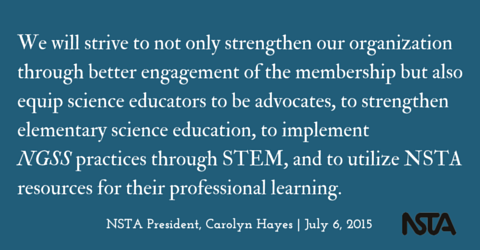 On behalf of the leadership of the National Science Teachers Association (NSTA), NSTA staff, and NSTA members, I would like to welcome and thank the NSTA members listed below, who are newly serving on our Standing Committees, Advisory Boards, and Panels; their terms of appointment began on June 1, 2015, and they’ve already begun doing important work like planning for our upcoming area conferences, getting the word out about legislation affecting teachers across the United States, and reviewing our journals and other publications!
On behalf of the leadership of the National Science Teachers Association (NSTA), NSTA staff, and NSTA members, I would like to welcome and thank the NSTA members listed below, who are newly serving on our Standing Committees, Advisory Boards, and Panels; their terms of appointment began on June 1, 2015, and they’ve already begun doing important work like planning for our upcoming area conferences, getting the word out about legislation affecting teachers across the United States, and reviewing our journals and other publications!
With the adoption of the NSTA Strategic Goals each committee, advisory board, and panel will focus on some aspect of the implementation plan for the upcoming year. We will strive to not only strengthen our organization through better engagement of the membership but also equip science educators to be advocates, to strengthen elementary science education, to implement NGSS practices through STEM, and to utilize NSTA resources for their professional learning.
Your presidential chain (which includes me, President-Elect Mary Gromko, and Retiring President Juliana Texley), Board and Council, are very grateful for the willingness of these members to join our team. We will work together to develop creative attitudes in science, technology, engineering, and mathematics for all our students. NSTA members who are interested in volunteering for a position on one of our committees, advisory boards, or review panels can find more information online. Not a member, but interested in shaping the direction of science education in the future? See all of our member benefits here.
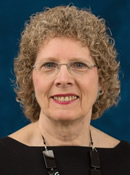 Carolyn Hayes is the NSTA President, 2015-2016; follow her on Twitter at caahayes.
Carolyn Hayes is the NSTA President, 2015-2016; follow her on Twitter at caahayes.
New Committee/Advisory Board/Panel Members
College
Cindy Birkner
Sarah Lang
John Wiginton
Coordination
David Johnson
Linda Schoen Giddings
Andria Stammen
High School
Lauren Case
Courtney Leifert
Steven Wood
Informal
Ed Barker
Joy Kubarek
Brad Tanner
Middle Level
Justin Brosnahan
Melanie Canaday
Tiauna Washington
Multicultural
Lisa Ernst
Sandra Osorio
Darrell Walker
Preschool-Elementary
Patricia Paulson
Stephanie Selznick
Danae Wirth
Preservice
David Crowther
Bianca Deliberto
Cynthia Gardner
Carolyn Mohr
Kira Heeschen (Preservice Teacher Rep)
Elaine Scarvey (Preservice Teacher Rep)
NSTA Teacher Accreditation
Carole Lee
Starlin Weaver
Professional Development
Cherry Brewton
Brittany Head
Catherine Shelton
Research
Victor Sampson
Kristen Sumrall
Cathy Wissehr
Audit
Rene Carson
Awards
Mary Maddox
Sheila Smith
Pam Vaughan
Budget
Jean Tushie
Nominations
Elsa Bailey
Michelle Daml
Gerald Darling
Janice Koch
Barbara Morrow
Aerospace
Kathy Biernat
Jacqueline Pfeiffer
Taylor Planz
Conference
Monica Ellis
Development
Patty McGinnis
International
Kathryn Elkins
Faiza Abdul Qayyum
Antoinette Schlobohm
Investment
Steve Rich
Journal of College Science Teaching
Issam Abi-El-Mona
Elizabeth Allan
David Wojnowski
NSTA Reports
Aaron Eling
Suzan Locke
Derenda Marshall
Retired
Lloyd Barrow
Gary Koppelman
Carrie Launius
Marilyn Richardson
Science and Children
Judy Clephane
Sherry Harrington
Laura Maricle
Science Matters
Ann Huber
Susan Tate
Jeni Williams
Science Safety
Patricia Hillyer
Rick Rutland
Rebecca Stanfield
Mary Loesing (reappointed)
Kathleen Brooks (extended)
Science Scope
Mary Pella-Donnelly
Heather Janes
Mary Elizabeth McKnight
Special Needs
Carol Cao
Meribeth Lowe
Sheryl Sotelo
Technology
Donna Cole
Kristen Kohli
Mijana Lockard
TST
Brian Bollone
Geri Granger
Traci Richardson
Urban Science
Brandon Gillette
Alton Lee
EllaJay Parfitt
CBC
Genet Mehari
Len Sharp
Trupti Vora
New Science Teachers
Alaina Anderson
Rebecca Gibson
Sumi Hagiwara
Shell
Peggy Carlisle
Carrie Lanius
Kristen Poindexter
The mission of NSTA is to promote excellence and innovation in science teaching and learning for all.
Follow NSTA
NSTA’s K-College July 2015 Science Education Journals Online
By Lauren Jonas, NSTA Assistant Executive Director
Posted on 2015-07-05
Varied ways to use instructional sequences that support valid learning, making science accessible to all students, big data, and identifying textbooks or other reading materials that are written at the appropriate reading grade levels—these are the themes of the Summer 2015 journal articles from the National Science Teachers Association (NSTA). Browse through the thought-provoking selections below and learn more about families learning together, integrated STEM units, harvesting data, peer-led team learning, and other important topics in K–College science education.
Science and Children
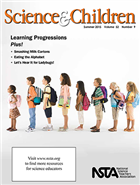 How much easier it would be, how much more learning would occur, and how much time we would save if all students brought the same background knowledge and skills to what they are learning? This issue of Science and Children employs the Next Generation of Science Standards (NGSS) to show the variety of ways in which you can use an instructional sequence that supports valid learning.
How much easier it would be, how much more learning would occur, and how much time we would save if all students brought the same background knowledge and skills to what they are learning? This issue of Science and Children employs the Next Generation of Science Standards (NGSS) to show the variety of ways in which you can use an instructional sequence that supports valid learning.
Featured articles (please note, only those marked “free” are available to nonmembers without a fee):
- Free – Dig Into Fossils!
- Eating the Alphabet
- Free – Editor’s Note: Identifying a Progression of Learning
- Families Learning Together
- Free – Guest Editorial: The Next Generation Science Standards: Where Are We Now and What Have We Learned?
- Let’s Hear It for Ladybugs!
- Smashing Milk Cartons
- Full Table of Contents
Science Scope
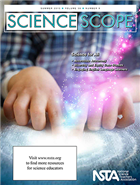 Making science accessible to all students should be the goal of every classroom science teacher. In this issue we share a variety of lessons you can use to overcome various socioeconomic, physical, and language barriers facing today’s students. We hope you can use these activities to help all of your students reach the stars.
Making science accessible to all students should be the goal of every classroom science teacher. In this issue we share a variety of lessons you can use to overcome various socioeconomic, physical, and language barriers facing today’s students. We hope you can use these activities to help all of your students reach the stars.
Featured articles (please note, only those marked “free” are available to nonmembers without a fee):
- Artificial Floating Islands: An Integrated STEM Unit
- Collaborative Concept Maps: A Voice for All Science Learners
- Free – Editor’s Roundtable: Charting a Course Toward NGSS Alignment
- Engineering Progressions in the NGSS Diversity and Equity Case Studies
- Science Meets Engineering: Applying the Design Process to Monitor Leatherback Turtle Hatchlings
- Supporting Science Access for All Students: Using Content Enhancements to Create Pathways to the Big Ideas
- The Fish Weir: A Culturally Relevant STEM Activity
- Free – The Next Generation Science Standards: Where Are We Now and What Have We Learned?
- Touching the Stars: Making Astronomy Accessible for Students With Visual Impairments
- Full Table of Contents
The Science Teacher
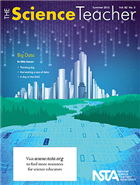 Ever-increasing volumes of information from sensors, satellites, cell phones, telescopes, global information systems, and social media provide unprecedented opportunities for scientists, citizens, and students to investigate complex systems. Scientific progress doesn’t result from simply accumulating data. But there’s no doubt that big data is revolutionizing fields as diverse as astronomy, marketing, genomics, climate science, oceanography, social science, and health care. Big data has the potential to transform science teaching and learning as well. Our students can engage in the higher-order thinking involved in analyzing and interpreting large science data sets and designing their own inquiries to discover patterns and meaning in mountains of accessible data, as authors in this issue of The Science Teacher illustrate.
Ever-increasing volumes of information from sensors, satellites, cell phones, telescopes, global information systems, and social media provide unprecedented opportunities for scientists, citizens, and students to investigate complex systems. Scientific progress doesn’t result from simply accumulating data. But there’s no doubt that big data is revolutionizing fields as diverse as astronomy, marketing, genomics, climate science, oceanography, social science, and health care. Big data has the potential to transform science teaching and learning as well. Our students can engage in the higher-order thinking involved in analyzing and interpreting large science data sets and designing their own inquiries to discover patterns and meaning in mountains of accessible data, as authors in this issue of The Science Teacher illustrate.
YouTube fans, watch high school science teacher and TST Field Editor, Steve Metz, introduce this month’s issue.
Featured articles (please note, only those marked “free” are available to nonmembers without a fee):
- Day in the Field
- Free – Editor’s Corner: Big Data
- Harvesting a Sea of Data
- Playing With Science
- Free – The Next Generation Science Standards: Where Are We Now and What Have We Learned?
- Free – Thinking Big
- Full Table of Contents
Journal of College Science Teaching
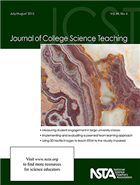 How do you handle the challenge of identifying textbooks or other reading materials that are written at the appropriate reading grade level yet still offer the desired content? See “Assessing the Readability of Geoscience Textbooks” to learn how one author assessed the readability of various materials to ensure that the text was not too challenging for students to comprehend. The Case Study article offers a detailed, step-by-step guide to helping students (and instructors) write case studies that are creative, well researched, and useful for teaching a topic to others. And don’t miss the Research and Teaching article that explores the effectiveness of incorporating 3D tactile images critical for learning STEM into entry-level lab courses for both sighted and vision-impaired students.
How do you handle the challenge of identifying textbooks or other reading materials that are written at the appropriate reading grade level yet still offer the desired content? See “Assessing the Readability of Geoscience Textbooks” to learn how one author assessed the readability of various materials to ensure that the text was not too challenging for students to comprehend. The Case Study article offers a detailed, step-by-step guide to helping students (and instructors) write case studies that are creative, well researched, and useful for teaching a topic to others. And don’t miss the Research and Teaching article that explores the effectiveness of incorporating 3D tactile images critical for learning STEM into entry-level lab courses for both sighted and vision-impaired students.
Featured articles (please note, only those marked “free” are available to nonmembers without a fee):
- Free – Are “New Building” Learning Gains Sustainable?
- Assessing the Readability of Geoscience Textbooks, Laboratory Manuals, and Supplemental Materials
- Collaboration-Focused Workshop for Interdisciplinary, Inter-Institutional Teams of College Science Faculty
- Implementing and Evaluating a Peer-Led Team Learning Approach in Undergraduate Anatomy and Physiology
- Research and Teaching: A New Tool for Measuring Student Behavioral Engagement in Large University Classes
- Research and Teaching: Aligning Assessment to Instruction: Collaborative Group Testing in Large-Enrollment Science Classes
- Research and Teaching: Methods for Creating and Evaluating 3D Tactile Images to Teach STEM Courses to the Visually Impaired
- Targeted Courses in Inquiry Science for Future Elementary School Teachers
- Using Popular Text to Develop Inquiry Projects: Supporting Preservice Teachers’ Knowledge of Disciplinary Literacy
- Full Table of Contents
Get these journals in your mailbox as well as your inbox—become an NSTA member!
Follow NSTA
Our Most Popular NSTA Press Book Quotes
By Carole Hayward
Posted on 2015-07-02
For nearly two years, NSTA Press has been pinning quotes from its books to Pinterest. Our followers often repin these interesting, informative, and often inspirational quotes. These are the books that have garnered the most attention. Are you following us on Pinterest?
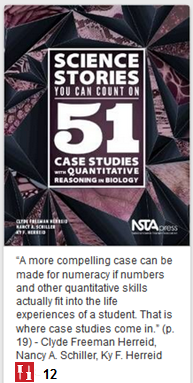 |
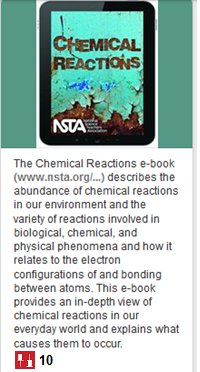 |
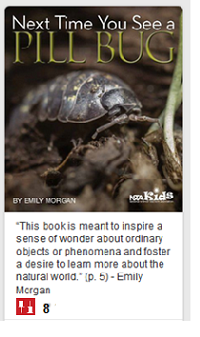 |
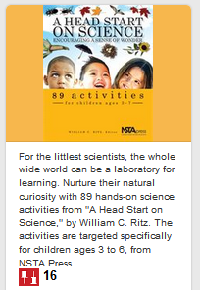 |
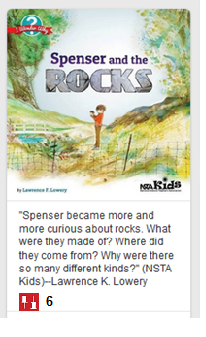 |
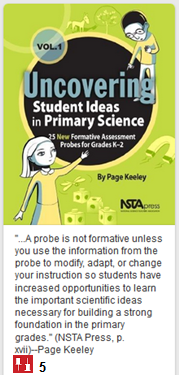 |
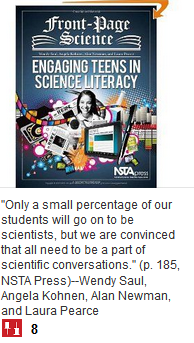 |
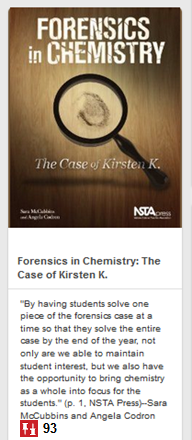 |
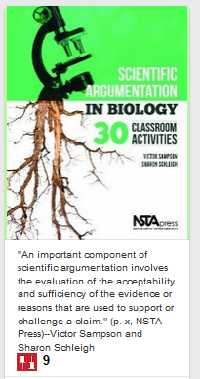 |
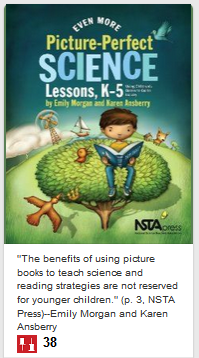 |
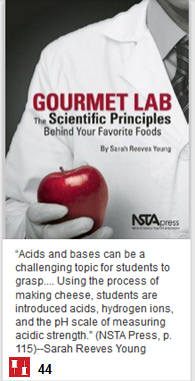 |
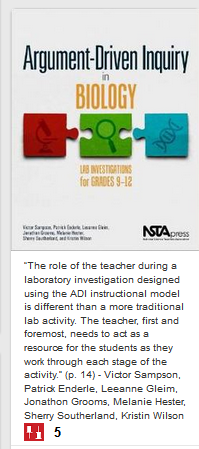 |
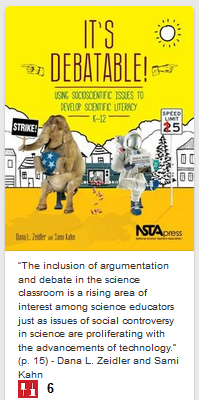 |
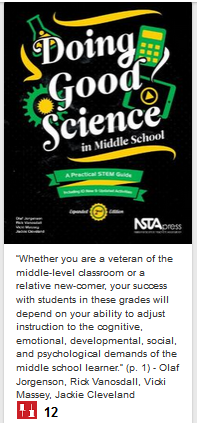 |
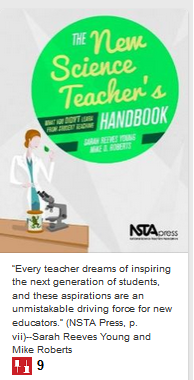 |
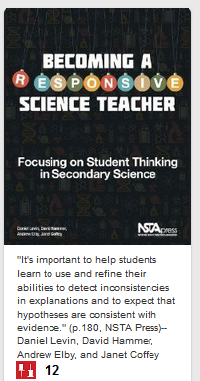 |
For nearly two years, NSTA Press has been pinning quotes from its books to Pinterest. Our followers often repin these interesting, informative, and often inspirational quotes. These are the books that have garnered the most attention. Are you following us on Pinterest?



